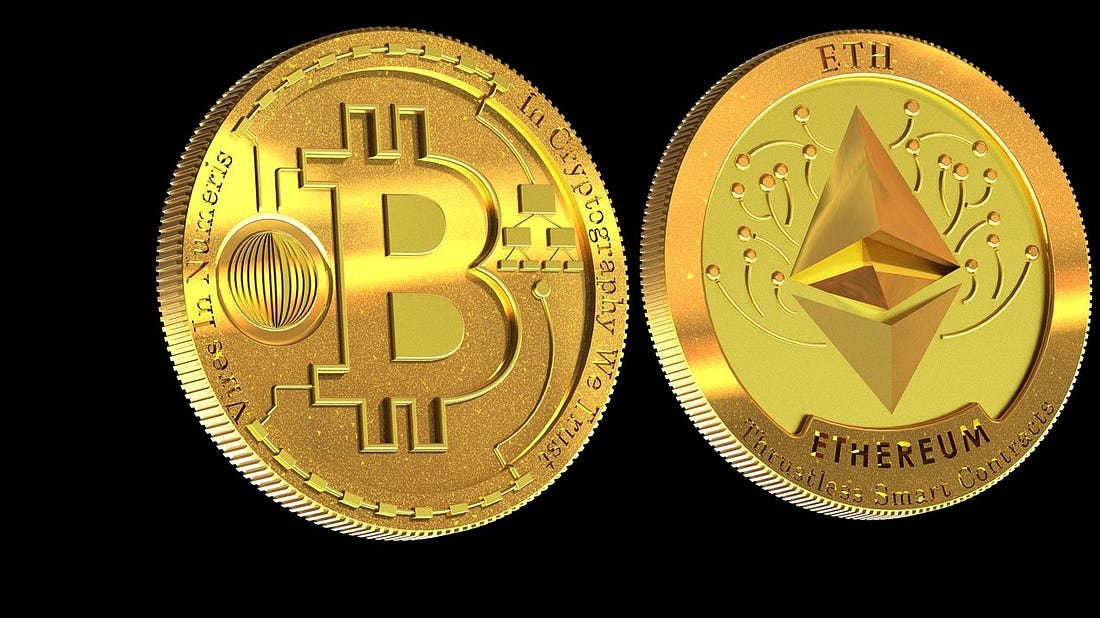
A ‘new bitcoin’, ‘the ethereum killer’…wonder how many times these two phrases have been used in the crypto space? Countless.
Bitcoin’s introduction changed the narratives for cryptography and created relevance for blockchain technology. Its primary use? Peer-to-peer exchange transactions.
‘A decentralized electronic cash that enables Peer-to-peer exchange of value without double spending’ sounds like a brilliant idea, yet only few believed in this.
Bitcoin’s surprise success quickly triggered the proliferation of similar projects claiming to be an improvement to bitcoin’s technology. Faster? Cheaper? Even though these alternatives achieved most of these, they were unable to displace bitcoin in terms of acceptability. Bitcoin retained its position as the original and most reliable peer-to-peer electronic cash system.
For Vitalik Buterin; P2P exchange was a very narrow scope for blockchain technology, a good number of very interesting things could be achieved using the blockchain and distributed ledger system.
Ethereum introduced smart contract technology and a virtual code executing machine which powers real utility applications and running on a blockchain which can also be used for decentralized Peer-to-peer electronic cash exchange. Ethereum’s introduction ushered in a new dimension for blockchain technology and cryptocurrency.
Programmable money; being the ‘new cash’ was actually the least ethereum could be. In essence, it is bitcoin and many more.
Well deserved; Ethereum climbed the stairs, from obscurity to the second-biggest blockchain and cryptocurrency project. Displacing other older projects and trailing behind bitcoin, of course; it was tipped to displace bitcoin too…it still is.

Together at the top; bitcoin and Ethereum’s reign has lasted the longest, but this hasn’t been without stern challenges. These two coins aren’t perfect anyways. There are no perfect systems, but improvements are always a thing to smile at.
Bitcoin’s shortcomings include a negative impact on the environment thanks to proof of work’s mode of operation. Its technology is also argued to be outdated and ‘archaic’. Many blockchain projects focused on Peer-to-peer electronic cash payment have introduced better alternatives to bitcoin’s consensus algorithms and a few tweaks to create a faster and environmentally healthier blockchain. With these features, they hoped to become the ‘new bitcoin’.
Ethereum, on the other hand, is riddled with efficiency and economic issues, and of course; its proof of work consensus places it in the same environmental position as bitcoin.
A couple of coins have put together proposals to tackle these issues, and many of them have received the approval of the majority of the cryptocurrency community and have soared in price as a result. A few of them have climbed the stairs to the third position — the Third coin…
LiteCoin, XRP, Cardano, Binance coin…each of these have once occupied the third position on the ranking and a few times have been tipped to journey into the second position as they are billed as superior to either ethereum or bitcoin or both.
Unfortunately, this never happened. These projects despite once occupying the third position and earning praise from the general community are unable to stand the challenge. Most of them have since slipped from this position. These failures are tragic…the tragedy of the third coin.
But why do these third coins fail? Bitcoin and ethereum have the first movers’ privileges. A very important advantage. Being the first to the market and gaining many users who turned believers and maximalists, challenging these two toppers goes beyond developing superior technology. Getting the old investors to abandon the project that warmed their hearts isn’t a very simple task. Even genius-level marketing wouldn’t do this easily.
Bitcoin maximalists would hardly listen to any argument against bitcoin, let alone accept it. This is the same with Ethereum maximalists. Despite the outrageous fees and decreased efficiency experienced by ethereum users, ethereum continues to wax stronger.

Apart from the first mover privilege; these third coins are in fact unable to match the mastery of these two toppers. Despite boasting a better technology and economy, these alternatives are found lacking in many important aspects. New smart contract blockchains may be faster and more efficient but are hardly decentralized and less secure than the ethereum blockchain. This is hard to ignore. Sacrificing security for speed is a tough decision. Better safer than faster. A centralized blockchain defeats the whole goal.
Many of these ambitious projects in an attempt to develop a better alternative end up reinventing the wheel. Their solutions are no different from existing ones; just a different branding and marketing schedule. The two projects at the top continue to look irreplaceable. Their technology keeps growing and getting better. Bitcoin’s latest upgrade allows smart contracts, and ethereum hopes to fix most of its issues with the ethereum 2.0. While these coins continue to develop positively, will a third coin rise from the ruins or will the tragedy continue?
Leave a Reply